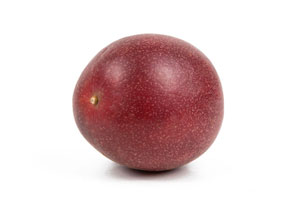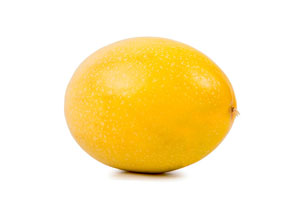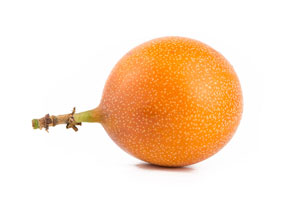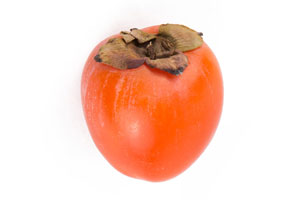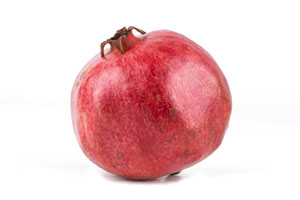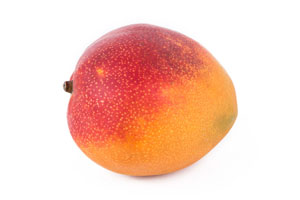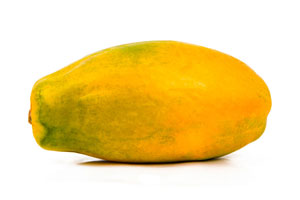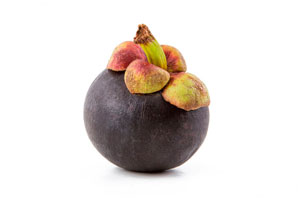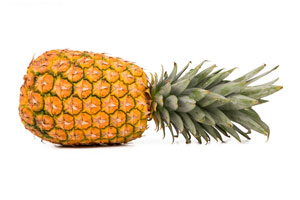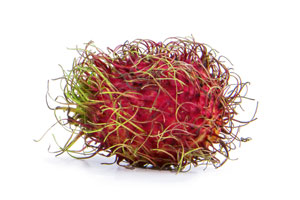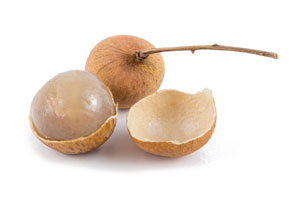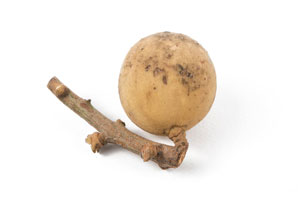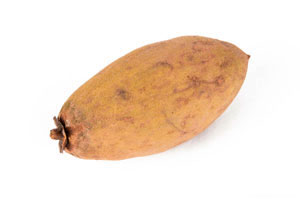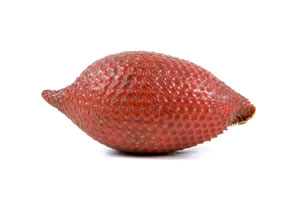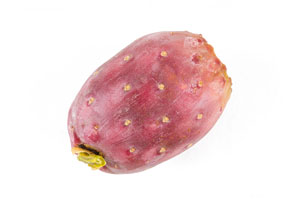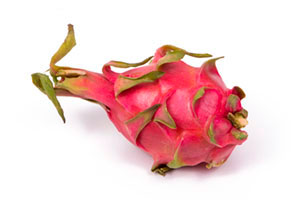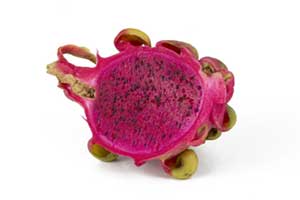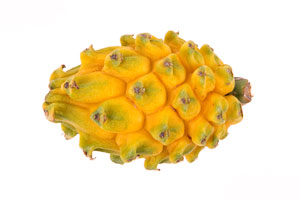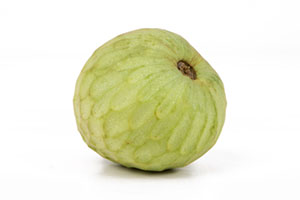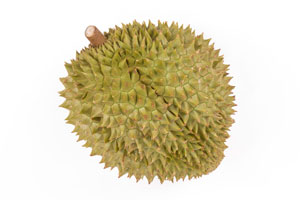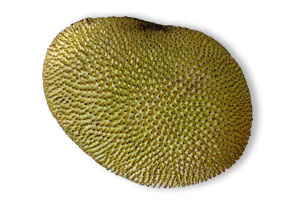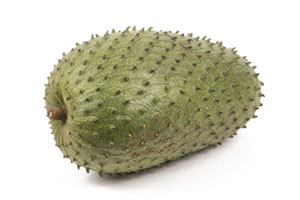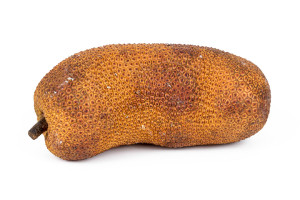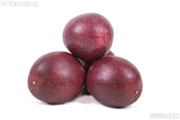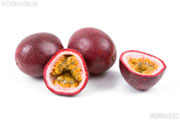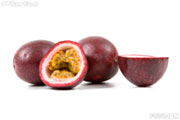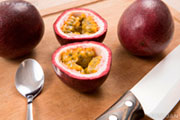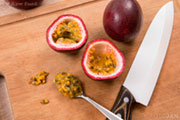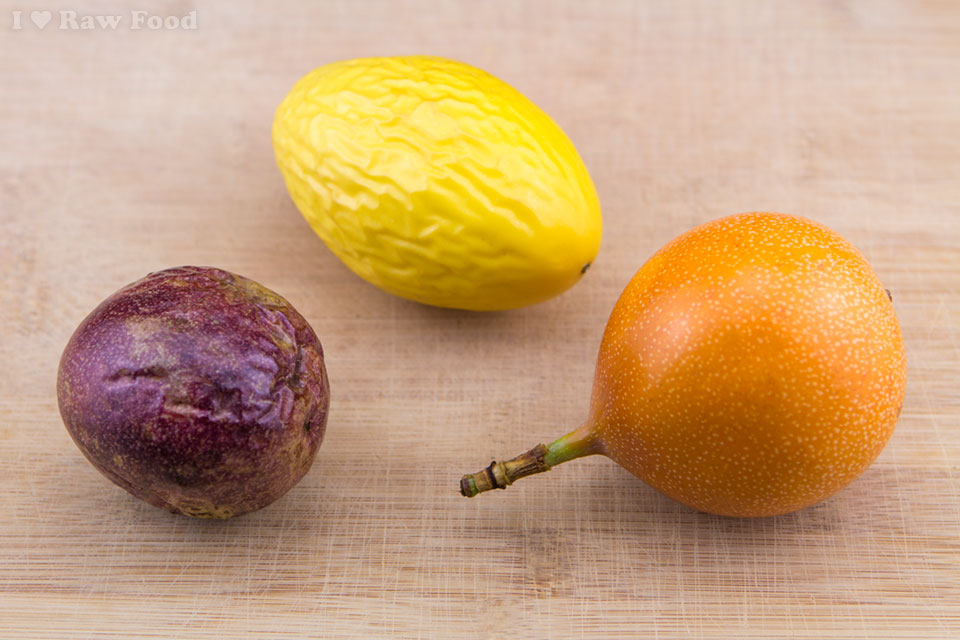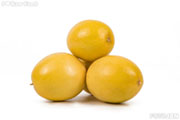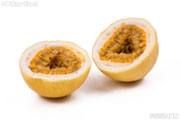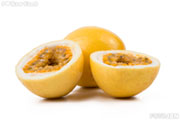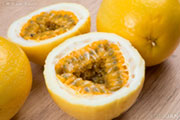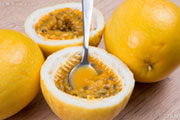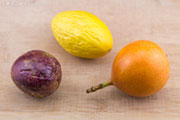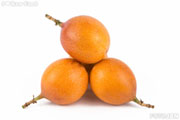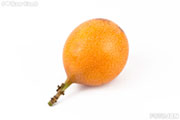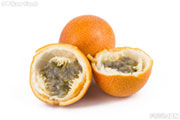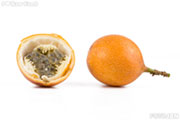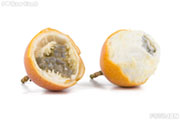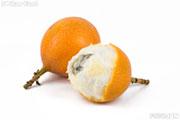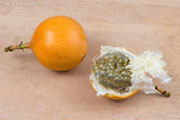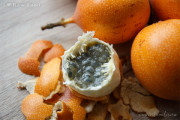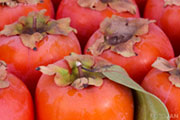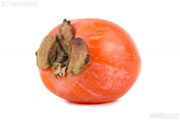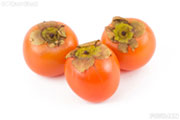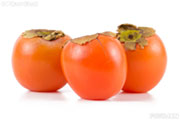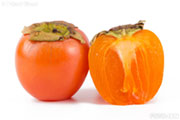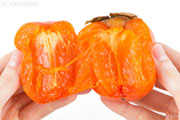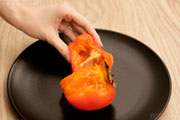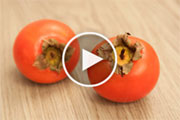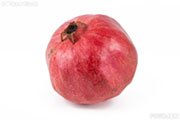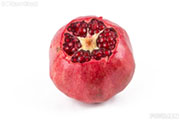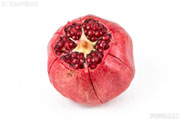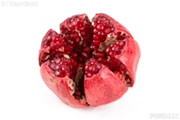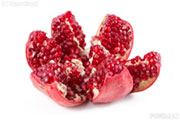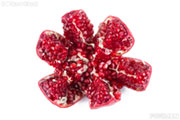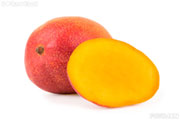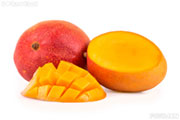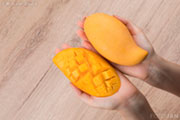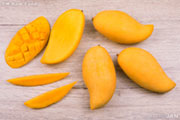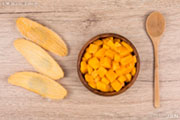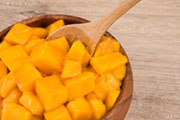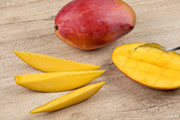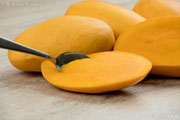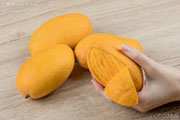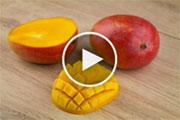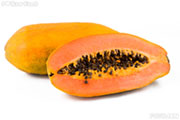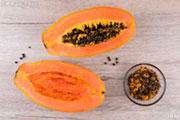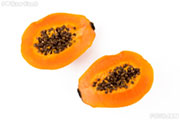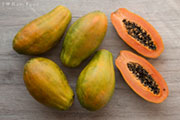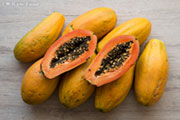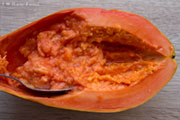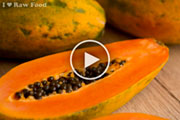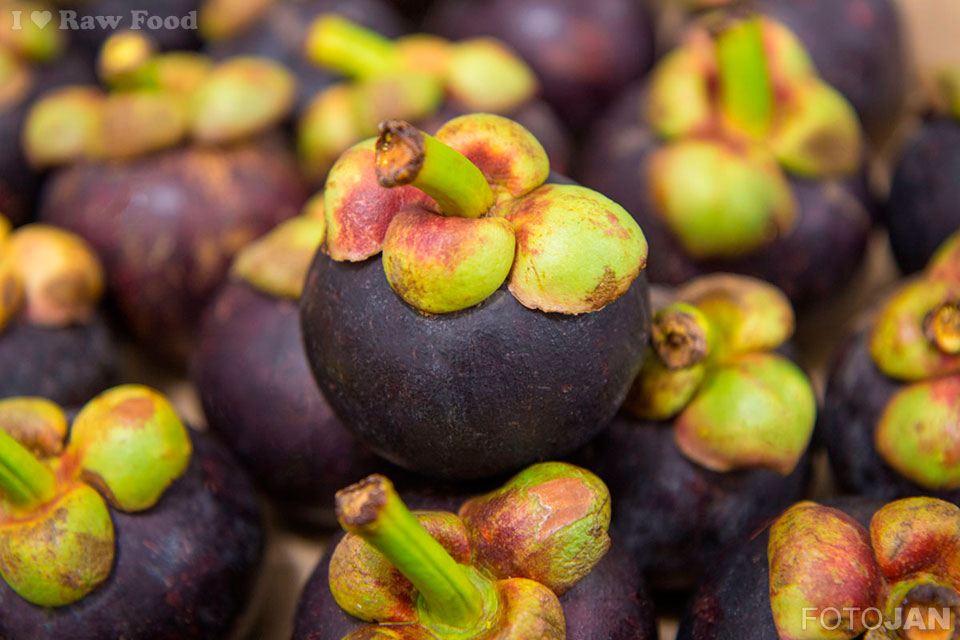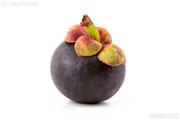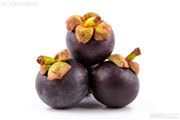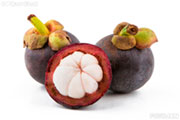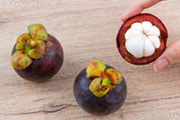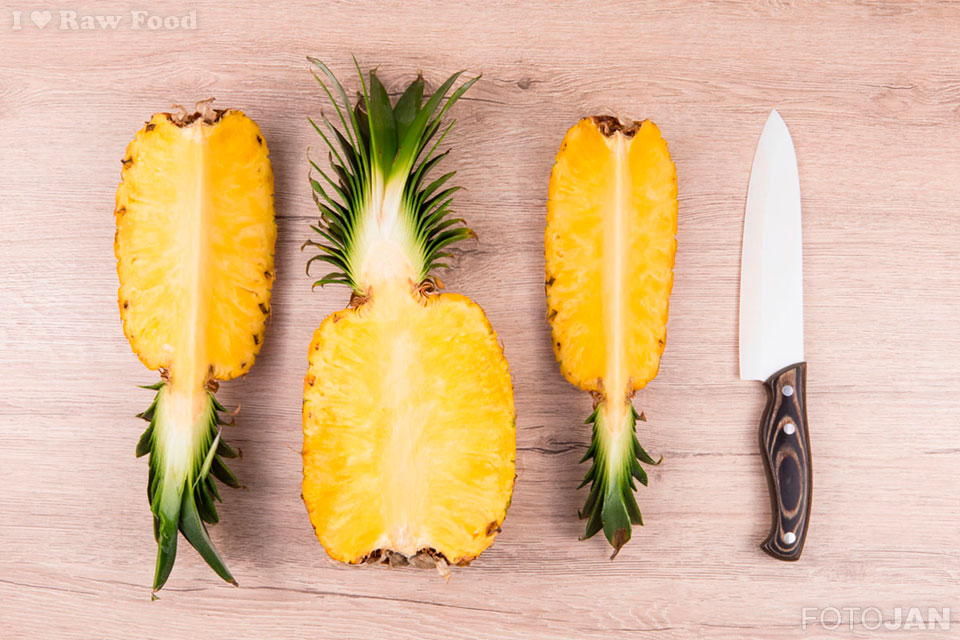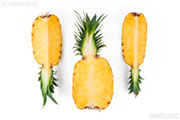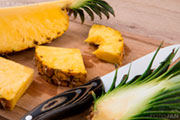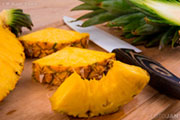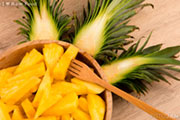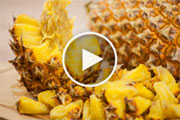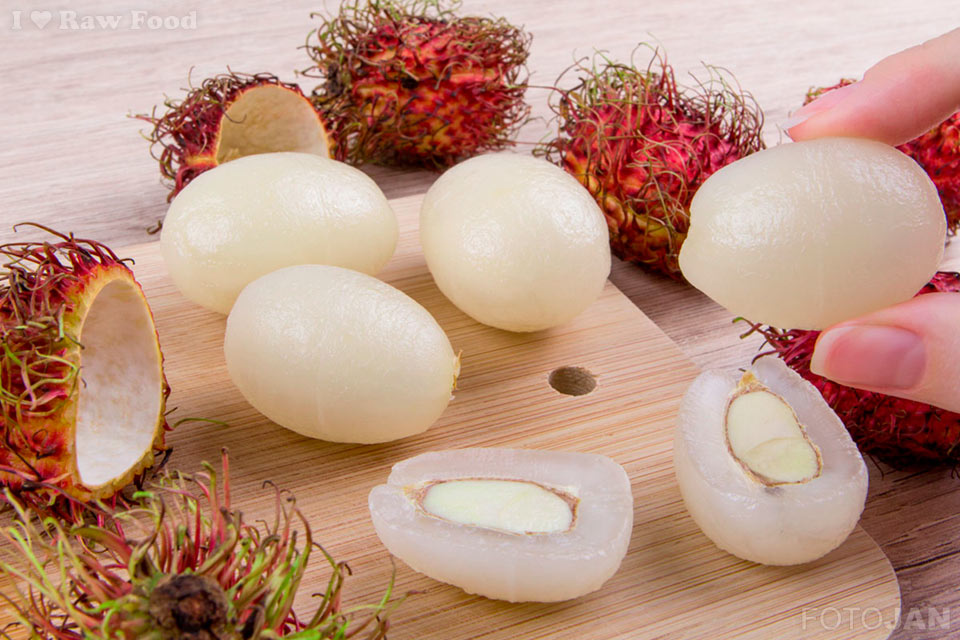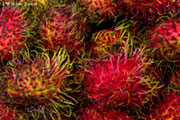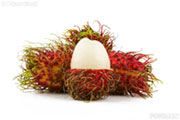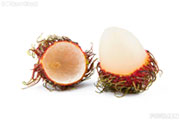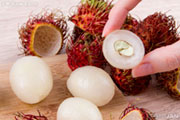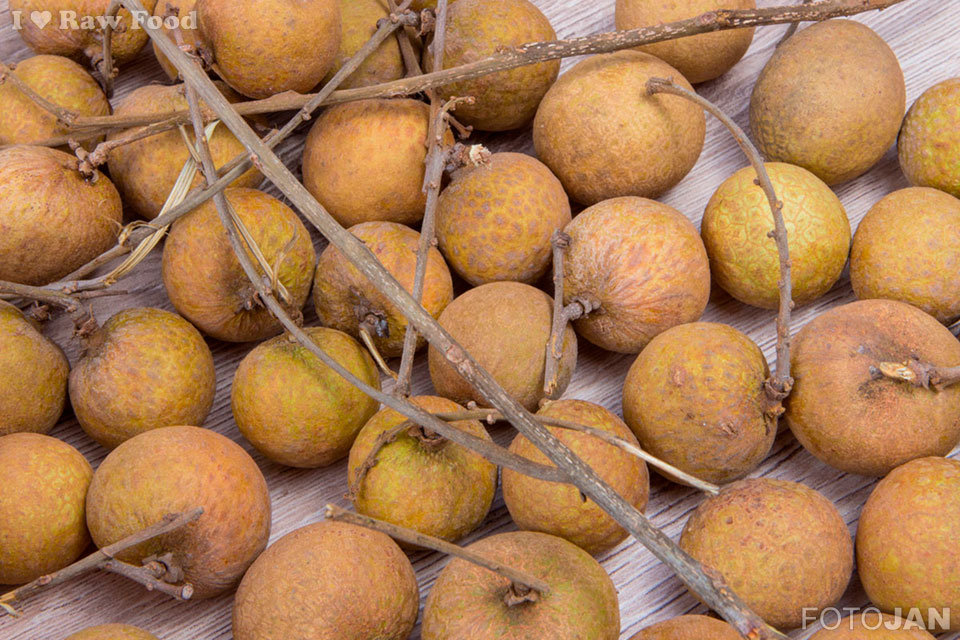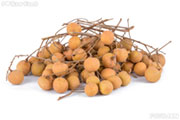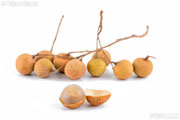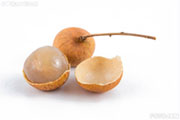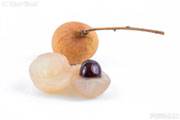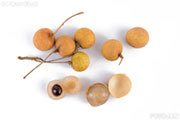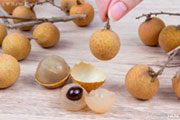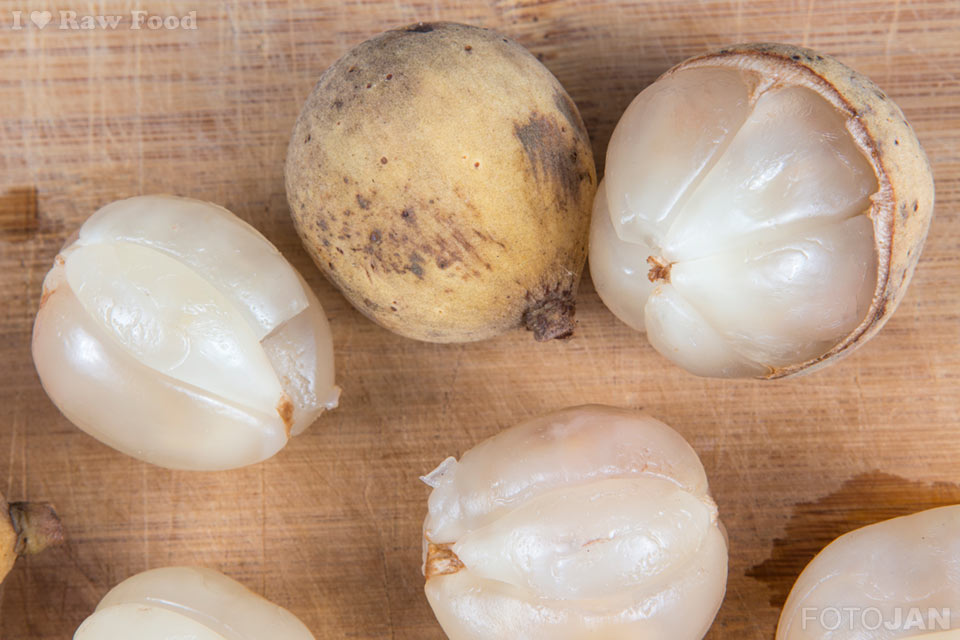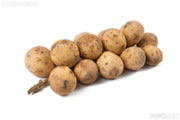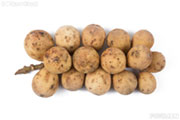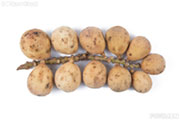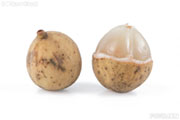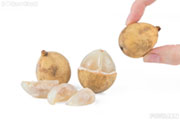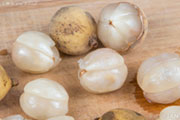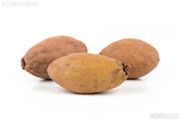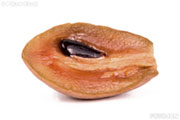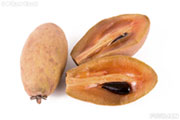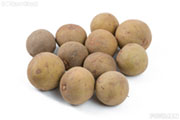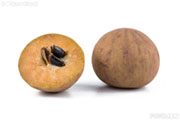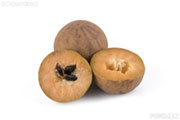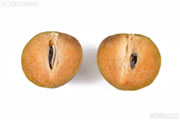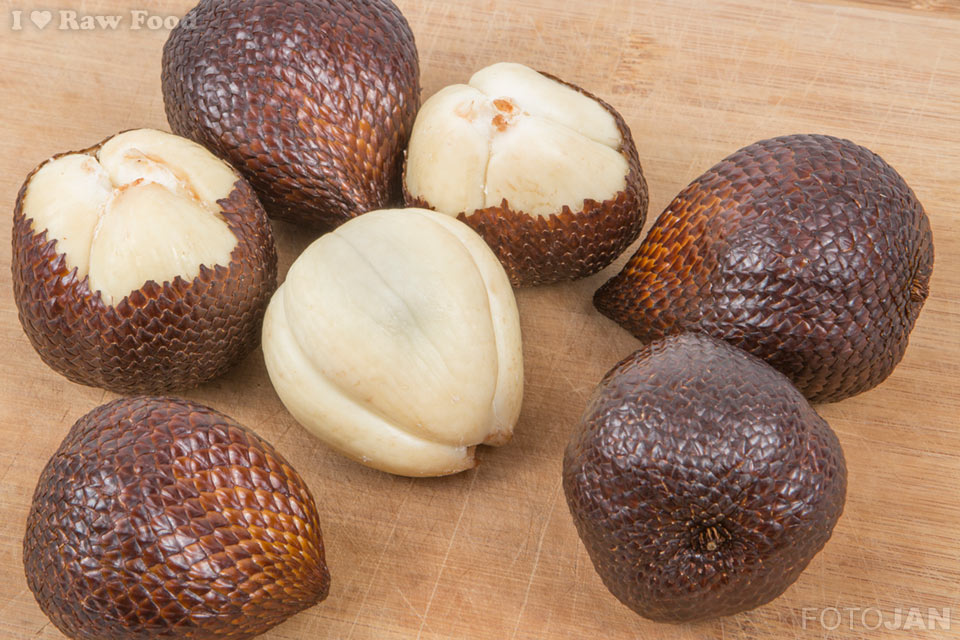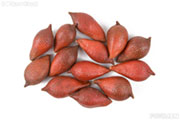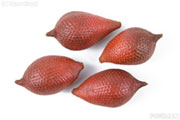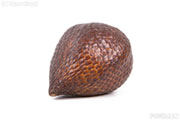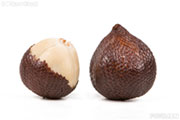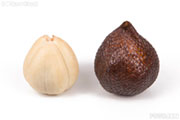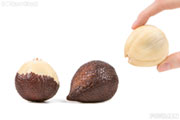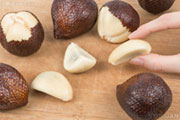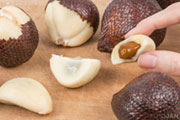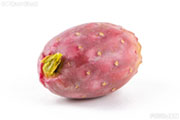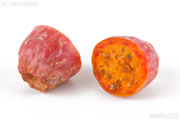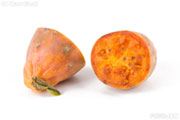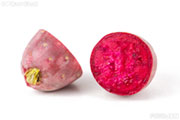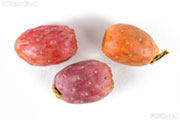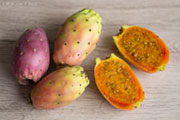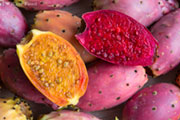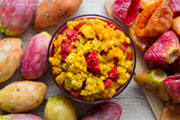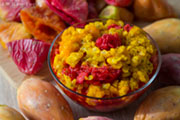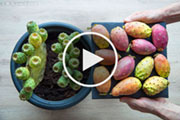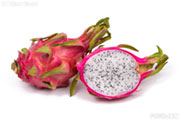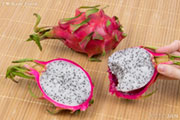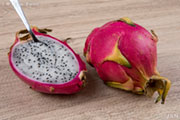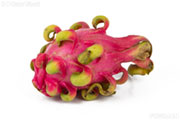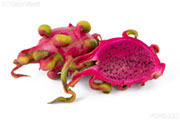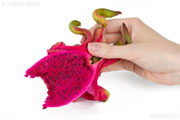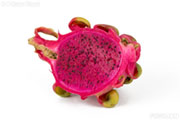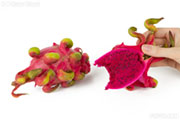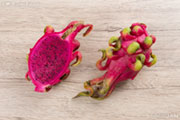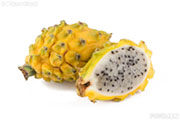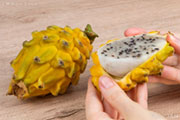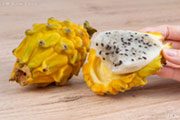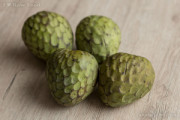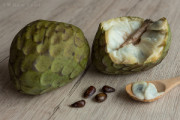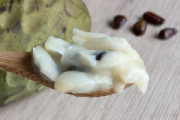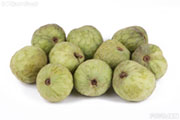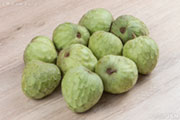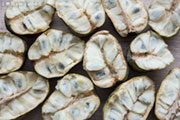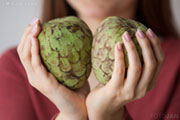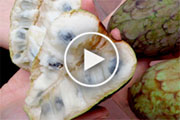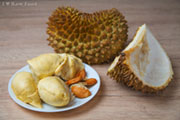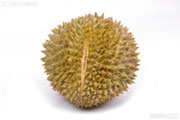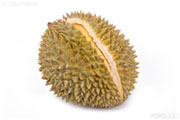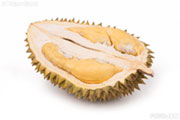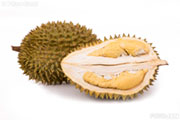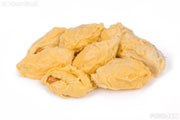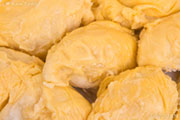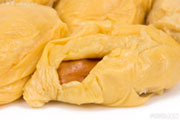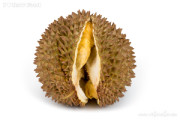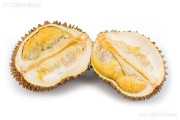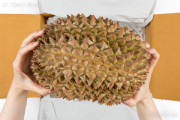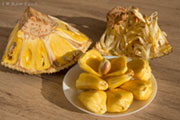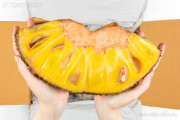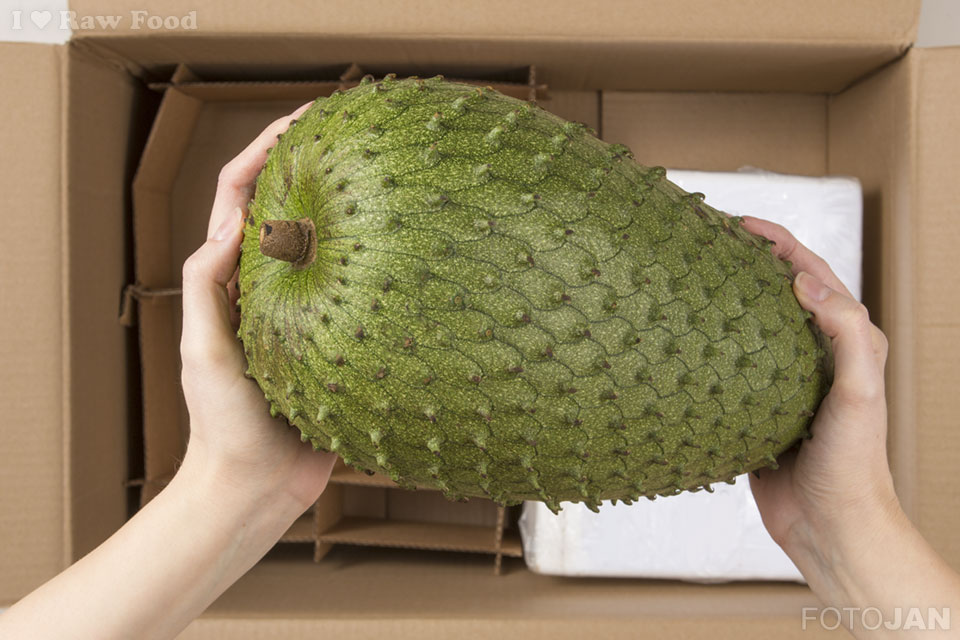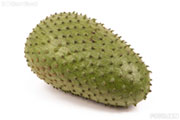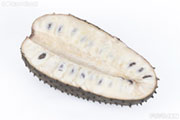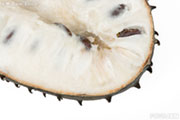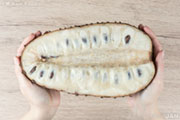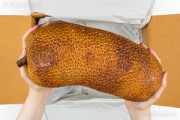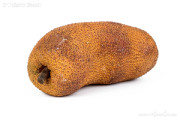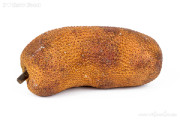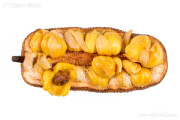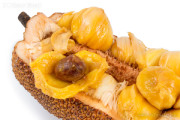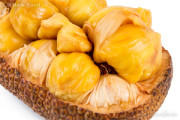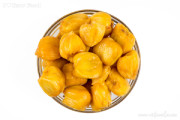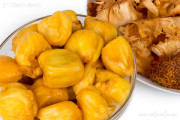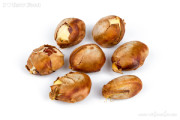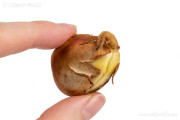Purple Passionfruit
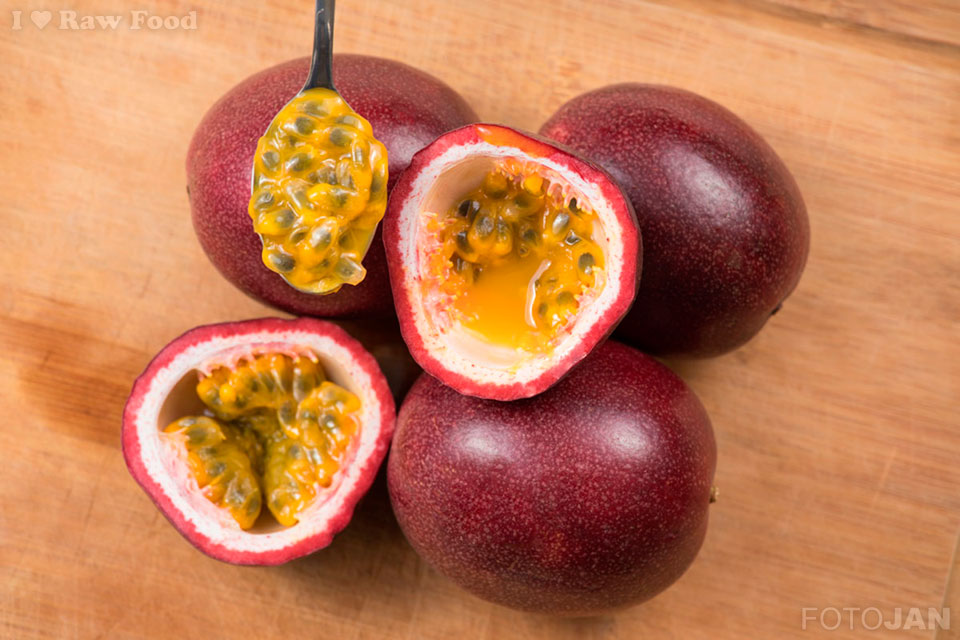
Genus: Passiflora
Synonyms: purple passionfruit, purple maracuya
Seeds: numerous, edible, cannot be easily separated from the fruit pulp
Pulp: soft and very juicy; sweet and sour taste; thanks to the edible seeds, that are eaten along, one will experience a sweet-sour, exotic, fruit explosion in the mouth
Ripe purple passionfruits have a soft and wrinkled skin that can turn dark purple with darker, brownish spots
Yellow Passionfruit
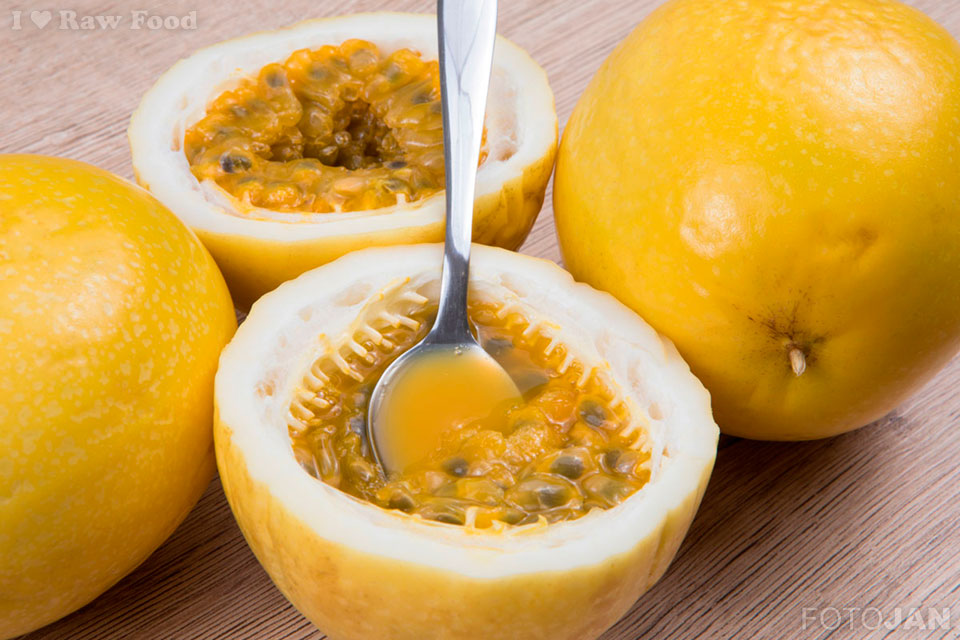
Genus: Passiflora
Synonyms: yellow passionfruit, yellow maracuya
Seeds: numerous, edible, cannot be easily separated from the fruit pulp
Pulp: soft and very juicy; sweet and sour taste, but sweeter and less sour than the purple passionfruit
Ripe yellow passionfruits have a dark yellow skin; if the skin is green, the fruits are unripe and not suitable for consumption!
Granadilla
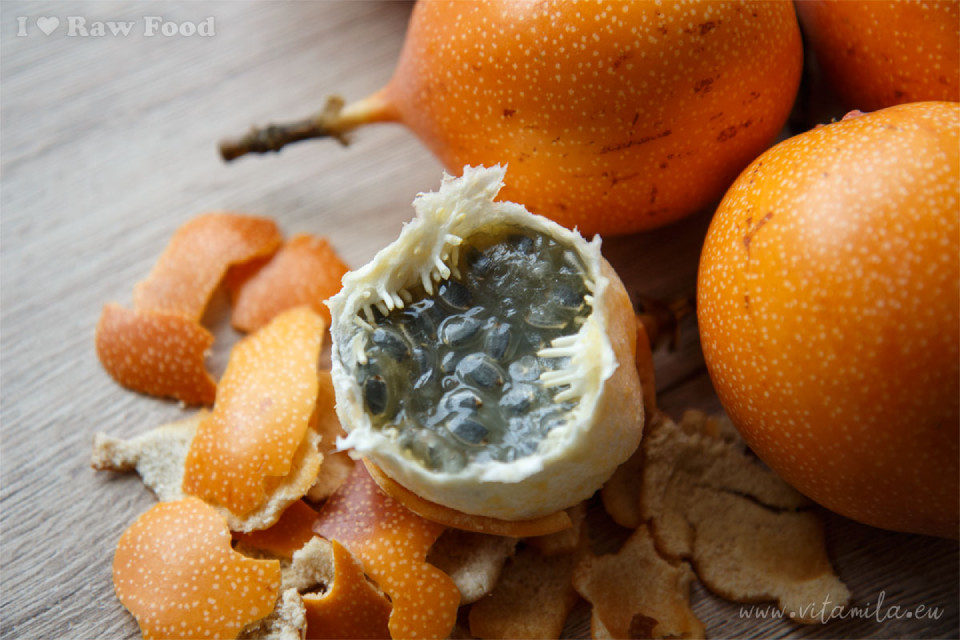
Genus: Passiflora
Synonyms: granadilla, grenadilla, grenadille, sweet passionfruit
Pronunciation: granadilla ♪
Seeds: numerous, edible, cannot be easily separated from the fruit pulp
Pulp: soft and juicy, but firmer than in the purple and yellow passionfruit; sweet taste—unlike purple and yellow passion fruits—the sweet passionfruit has no sour taste!
Ripe sweet passionfruits have a light to dark orange skin that peels like a boiled egg; grenadillas with a green or yellow skin are unripe and will not ripen after the harvest; a hard skin with many brown spots is a sign of overripe fruit stored for too long
Tip: the white layer/sheath between the orange skin and the pulp is—as in oranges—edible and healthy! (health benefits, texture and taste are similar to those of oranges)
Persimmon
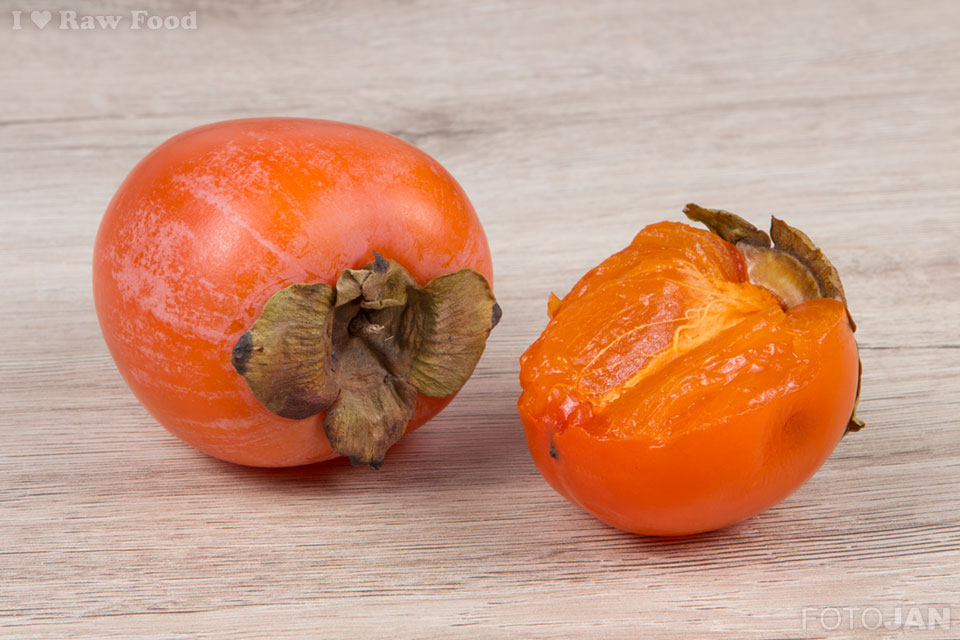
Genus: Diospyros
Synonyms: persimmon, kaki, sharon fruit
Ripe fruit is soft, has a sweet, mild and rich taste; honey-like; with a jelly consistency similar to a ripe apricot; it can be torn apart with bare hands
Pomegranate
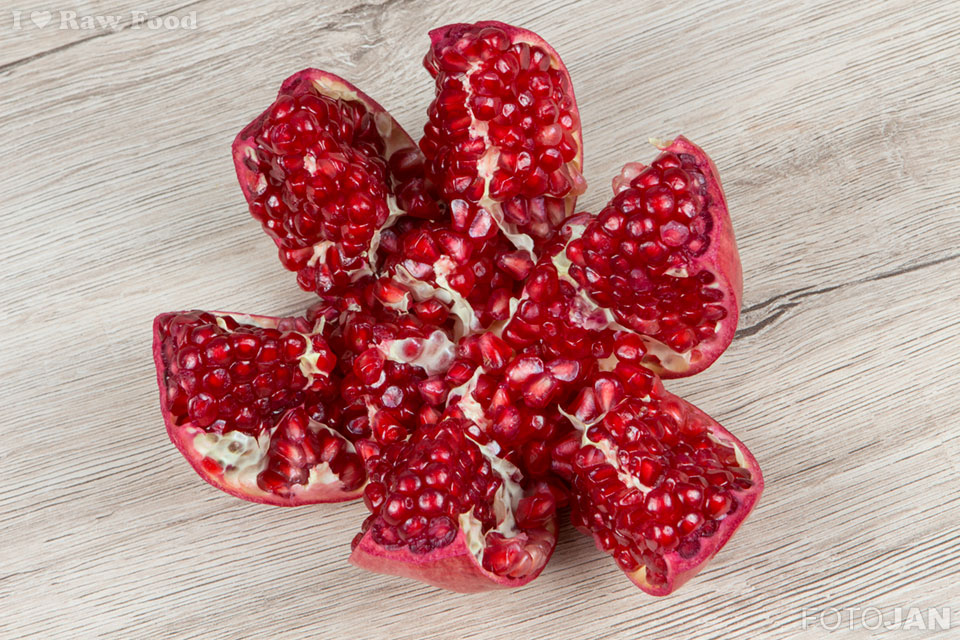
Genus: Punica
Ripe fruit has a tart, sweet and sour taste, similar to cranberries and cherries. The fruit flesh is eaten together with the seeds.
Mango
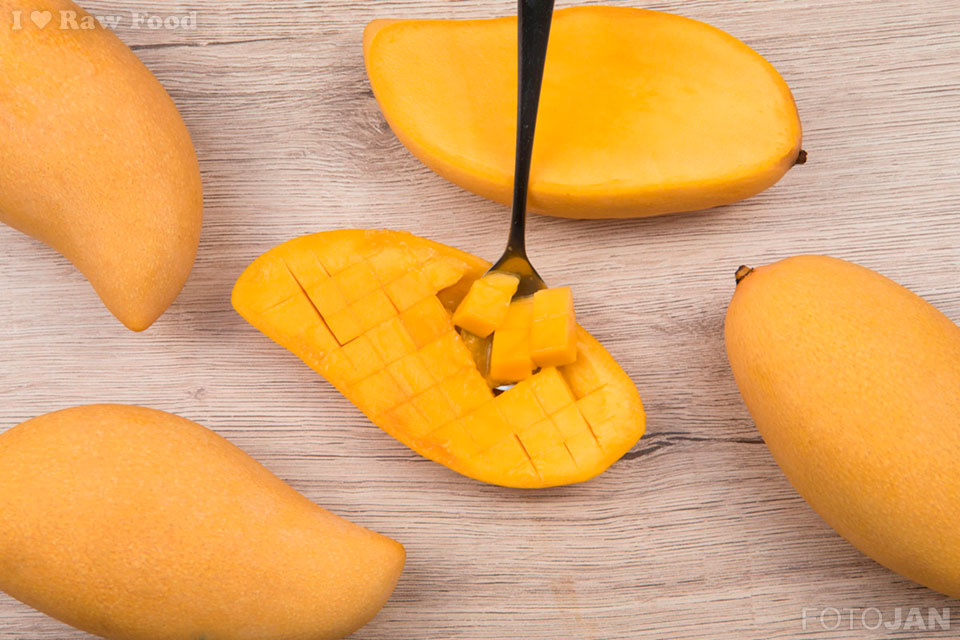
Genus: Mangifera
Ripe fruit is soft. Depending on the variety, the flesh can be more or less fibrous, sweet and juicy, is dark yellow to orange in colour.
Papaya
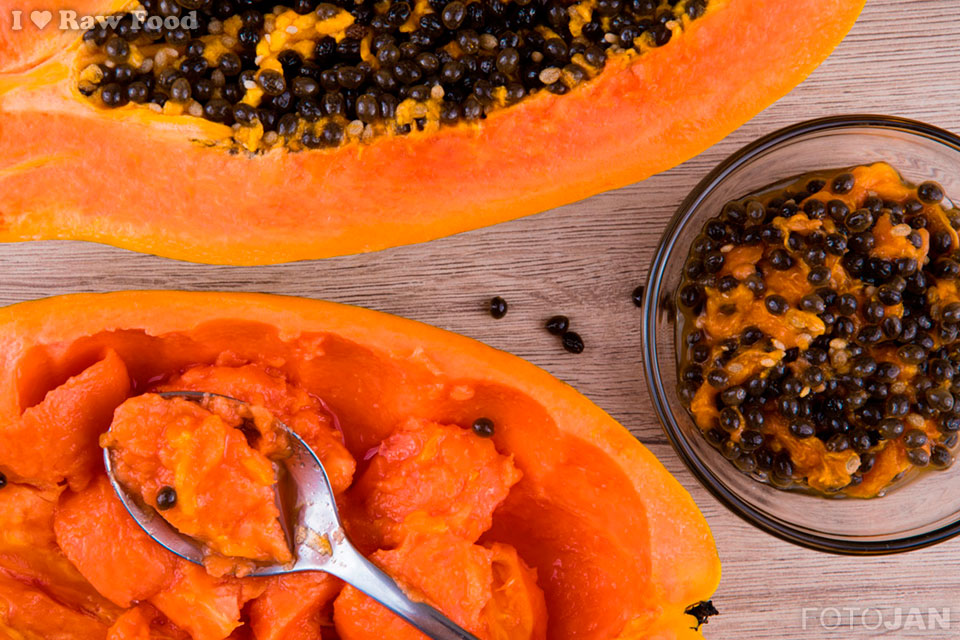
Genus: Carica, from the melon family (Caricaceae)
Seeds: numerous and edible; spicy, similar to cress; can be eaten with the fruit but also dried and used as an alternative to black pepper
Ripe papaya has a soft and orange flesh, that is juicy and caramel-sweet, but may vary depending on the variety
Sapote
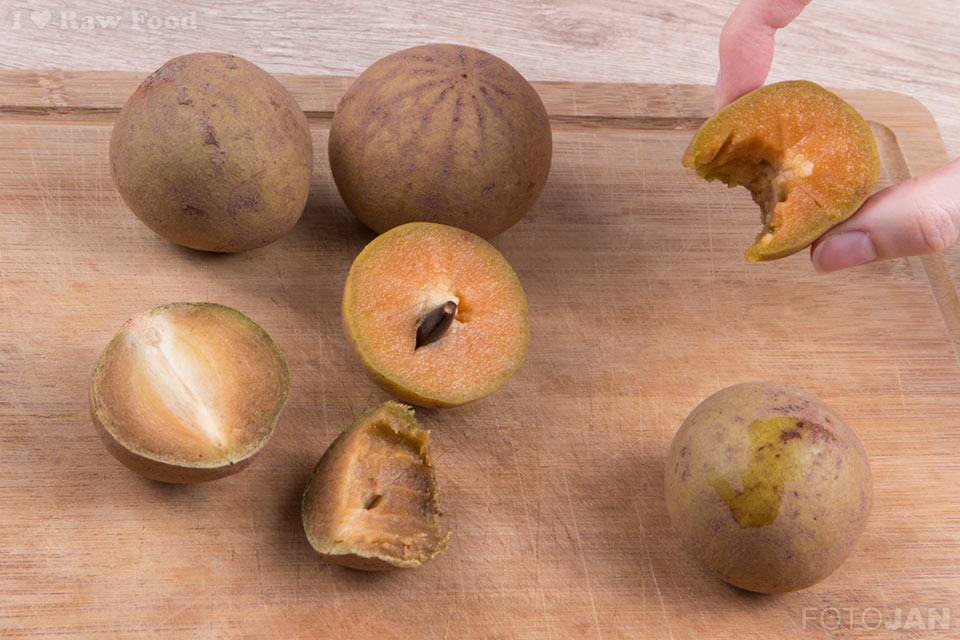
Genus: Pouteria sapota and Manilkara zapota
Synonyms: sapote, chico, sapotille, sapodilla
Prickly Pear
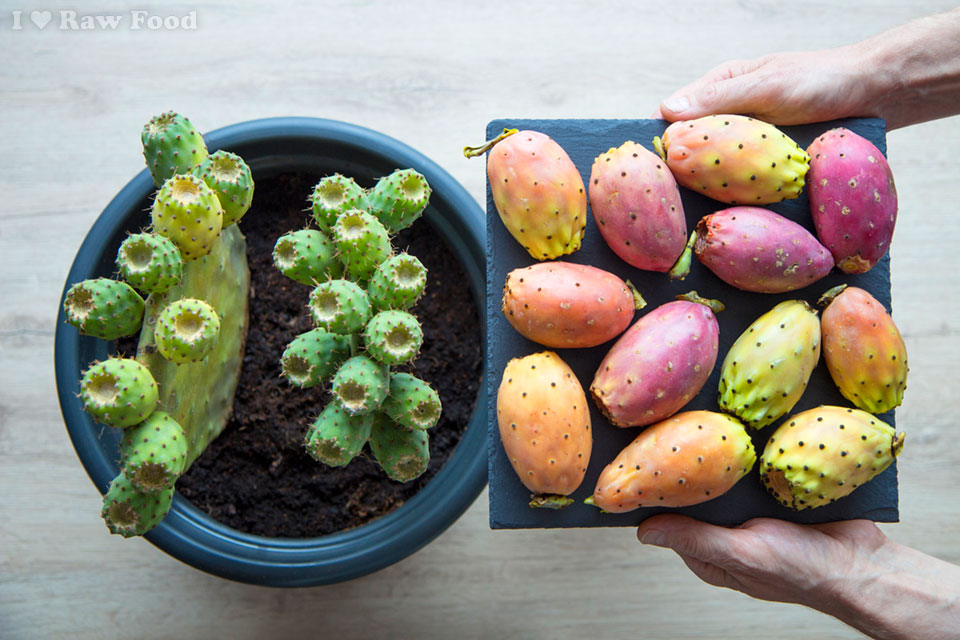
Genus: Opuntia
Synonyms: prickly pear, cactus fruit, cactus fig, opuntia fig
Seeds: numerous, edible, cannot be easily separated from the fruit pulp
Pulp: juicy, refreshing, similar in taste and consistency to a (water)melon
Watch out for the spikes! I recommend thoroughly cleaning the cactus fruit of the spines—the smallest ones are not visible. Adhesive tape helped me remove those invisible spikes that stuck in my skin (before I started to remove spikes thoroughly and to wear protective gloves).
The seeds are harder than our teeth (they cannot be chewed), but they can be eaten together with the pulp. Alternatively, you can mix the pulp together with seeds in a blender or a food processor and then strain through a sieve to separate the juice from the pulp and the seeds.
Pitahaya red–white
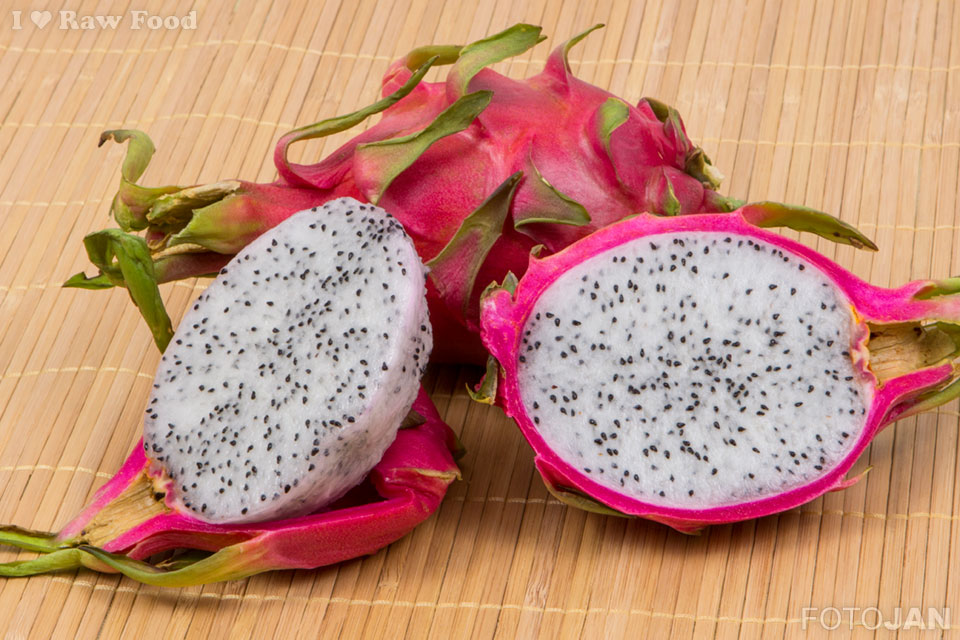
Genus: Hylocereus
Synonyms: red dragon fruit with white pulp, red pitahaya, red pitaya
Pithaya red–red
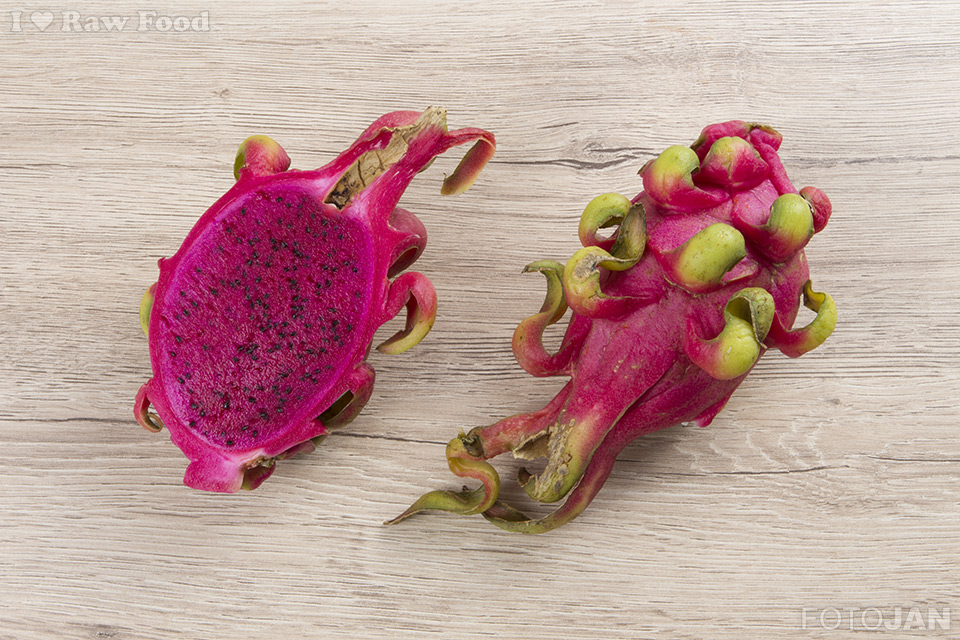
Genus: Hylocereus
Synonyms: red dragon fruit with red pulp, red pitahaya, red pitaya
Pitahaya yellow–white
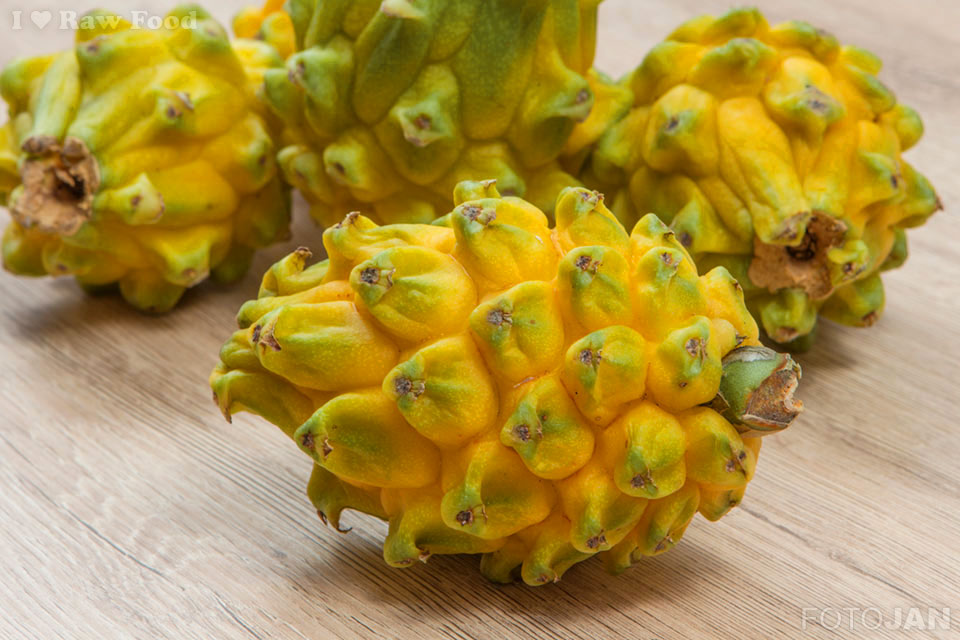
Genus: Hylocereus
Synonyms: yellow dragon fruit with white pulp, yellow pitahaya, yellow pitaya
Custard apple
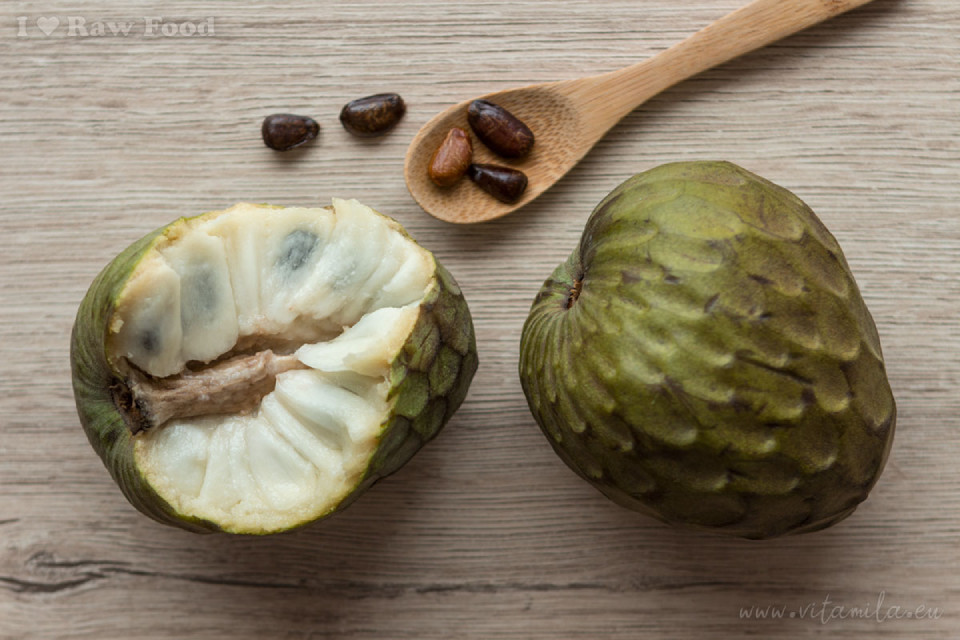
Gattung: Annona
Synonyme: custard apple, cherimoya, chirimoya, chirimuya
Seeds: many, NOT edible, are relatively easy to separate from the fruit pulp
Pulp: soft and delicate; very sweet—like candy floss; tastes like custard, reminiscent of pineapple or strawberry, right beneath the skin—like a very ripe pear
Ripe cherimoya is soft; the skin has dark brown spots and can change the colour from dark green to yellow-green
Durian
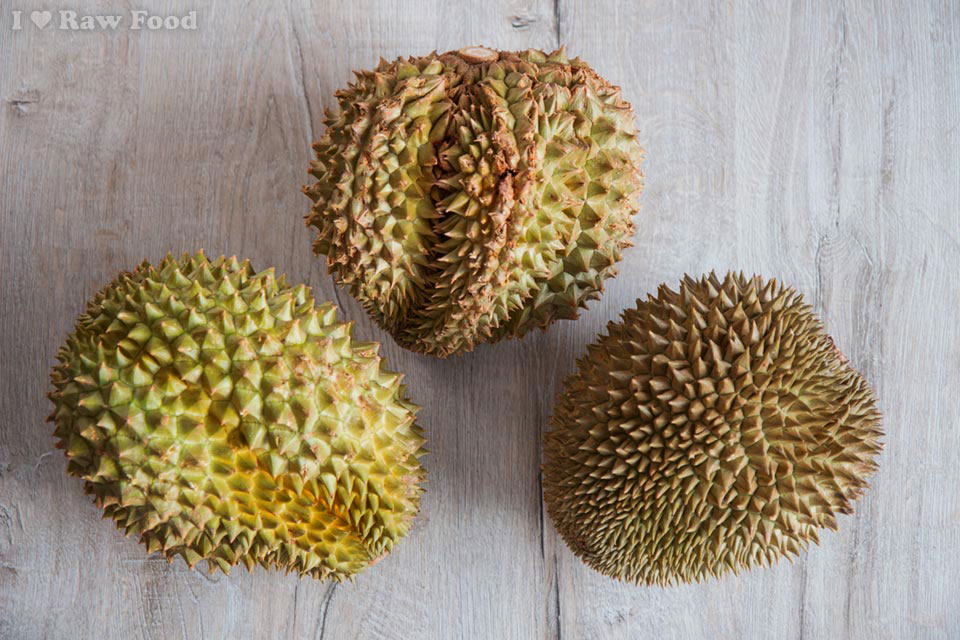
Genus: Durio zibethinus
Synonyms: Durian, Durio, Lahia Hassk
Seeds: not edible; one seed per fruit segment (2–3 fruit segments per fruit chamber)
Pulp: tender and creamy, like a pudding; softness depends on the variety; pale yellow to red colour depending on the species
Fragrance: overwhelming; fruity; unpleasant for “non-enthusiasts”; reminiscent of spoiled egg, rotten cabbage, rotten onion, spoiled fruit
Ripe Durian has a soft fruit pulp; the skin can change colour from dark green to yellow-green or yellow-brown and break open when the fruit is ripe
Tip: this unusual fruit should be given three chances before you can decide whether you like it or not—and I can confirm it. The first time I tried durian was on a raw food potluck and the smell itself made me feel sick. The second time I ate it while holding ma nose closed. The third time I was excited like a cat for catnip—I was over head and ears—I fell in love with durian :) And my husband loved it from the first time he tried it!
Jackfruit
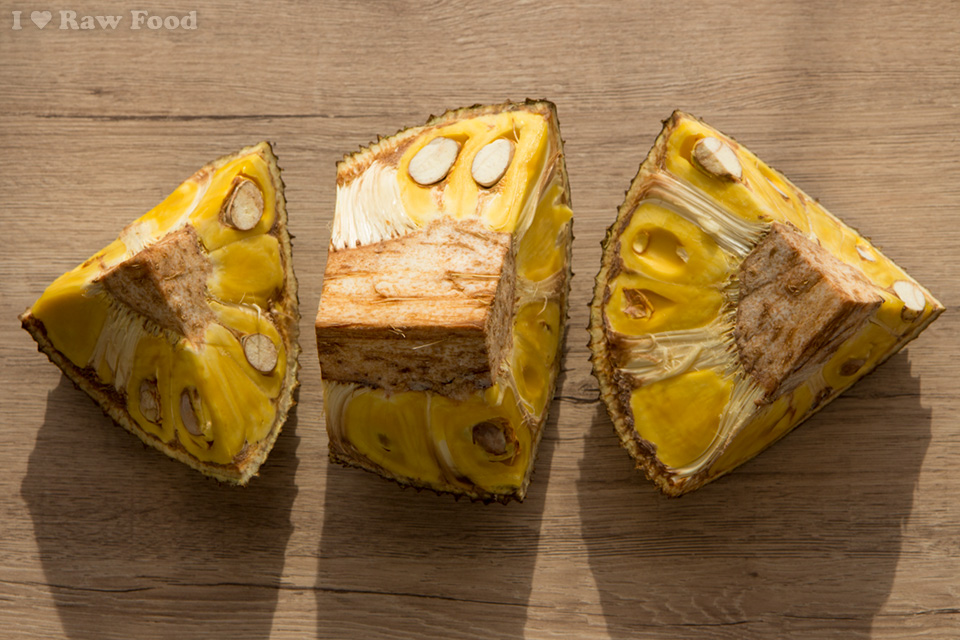
Genus: Artocarpus
Seeds: many — one seed per fruit segment
Pulp: sweet and juicy, depending on the species and degree of maturity, it has a consistency similar to gummy bears, crunchy and juicy to soft and slightly slimy. Intense, sweet, exotic, fruity aroma of pineapple, guava, lemon, banana (similar to Juicy Fruit chewing gum). The flesh of the ripe fruit is dark yellow to dark orange in colour.
Ripe jackfruit weighs from about 7—8 to about 50 kg and is the largest fruit in the world.
Attention! Jackfruit is not breadfruit! Unlike the jackfruit, breadfruit is a small fruit (the size of a grapefruit or Galia melon). Breadfruit usually has no seeds. The pulp of a ripe jackfruit has a creamy consistency, similar to durian and graviola.
Cempedak
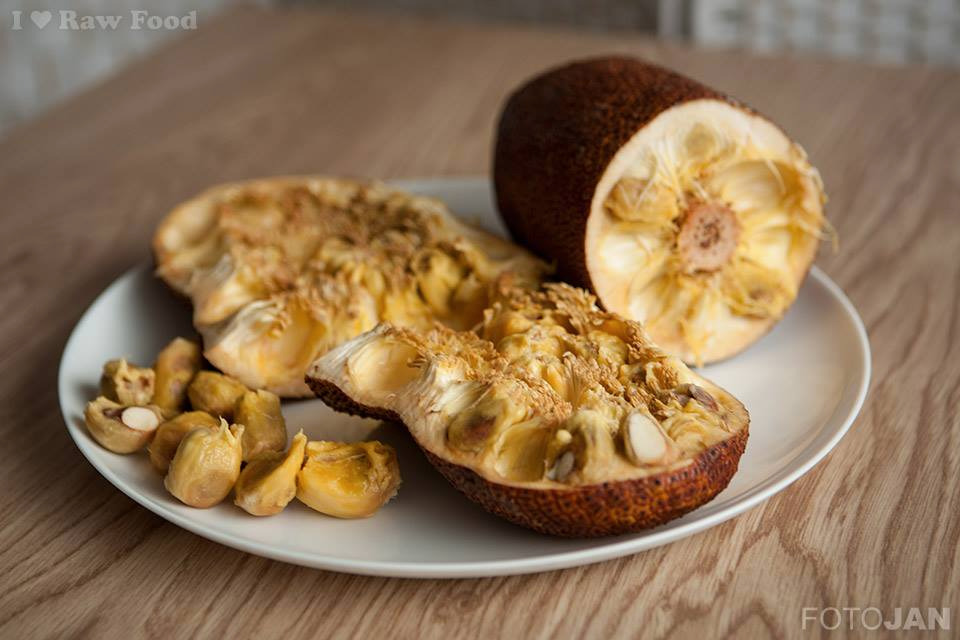
Genus: Artocarpus
Synonyms: cempedak, chempedak
Seeds: many — one seed per fruit segment
Ripe cempedak has an orange-brown skin. The flesh of the ripe fruit is dark yellow in colour, sweet, juicy, soft and slightly sticky and slimy. If you like jackfruit and durian, than you will most probably enjoy cempedak, as it looks, smells and tastes like a mixture of those two fruits.

